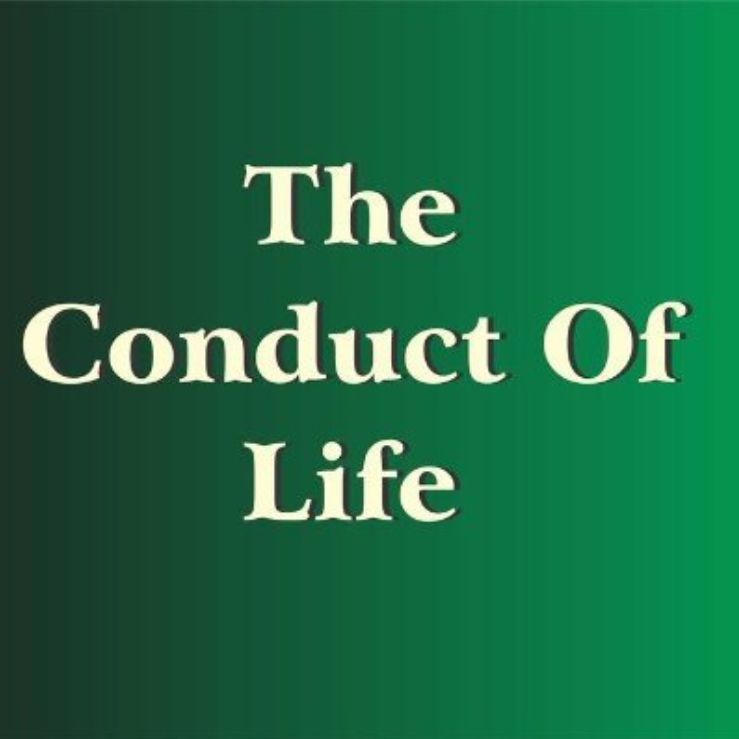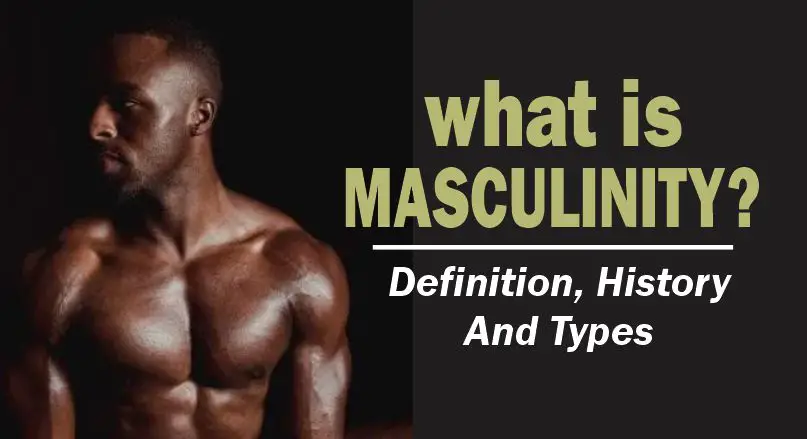Last updated on December 25th, 2024 at 12:47 am
What is masculinity? Get familiar with the complex and ever-evolving concept of masculinity, also called manliness, shaped by cultural, social, and historical influences.
Ideas about what it means to be a man are prevalent. While most are healthy ways of expressing manliness, the majority are toxic and harmful to the individual and people around him.
The expressions of masculinity vary along the lines of culture, religion, and other factors. Learn about its impact on personal identity and societal norms and the challenges of traditional masculinity.
Understand how media, historical events, and different cultures influence masculine identity and the movement towards more inclusive, non-toxic expression of what it means to be a man.
RELATED: Fragile Masculinity: Signs and Examples
Key Takeaways
- Masculinity is an ever-evolving concept shaped by cultural, social, and historical influences, with modifications across cultures.
- Traditional masculinity emphasizes stoicism, strength, and authority, while modern views encourage empathy and emotional expressiveness.
- Understanding masculinities promotes carrying everyone along and challenges harmful stereotypes and rigid gender roles.
- Media, historical events, and cultural shifts shape masculine identity, driving movements towards more inclusive, non-toxic expressions of manliness.
Table of Contents
- Key Takeaways
- What is Masculinity?
- Definition of Masculinity Across Cultures
- Brief History of Masculinity
- What it Means to Be a Man in Early History
- What Determines Masculinity?
- Characteristics of Masculinity
- Positive and Negative Traits of Masculinity
- Masculine Men
- Types of Masculinity
- How Masculinity is Created
- How Young Men Learn Masculinity
- Masculinity in Women
- Masculinity and Health
- Masculinity in Crisis
- Masculinities and the Men’s Rights Movement
- Masculinity in Different Cultures
- Challenges of Masculinity
- How to Balance Masculinity
- Conclusion

What is Masculinity?
Masculinity is an umbrella term that covers a wide range of attributes, behaviors, and roles, associated with boys and men. Masculinity also called manhood is the opposite of feminine identity or womanhood. It serves as a framework through which society interprets and evaluates the male identity. Though masculinity may seem straightforward, it is shaped by many factors including culture, society, historical influences, religion, and more.
It expects men to be stoic, and brave while women are expected to be emotive, passive, and sentimental.
Understanding masculinity is fundamental as it influences social perceptions, behaviors, and interactions within various social structures.
Masculine traits are often eulogized, shaping gender dynamics and societal expectations.
It impacts personal identity, career choices, relationships, and mental health.
Recognizing its diverse expressions traditional and modern is essential for a society that carries everyone along.
Related: The Effect Of Gender Stereotypes On People
Definition of Masculinity Across Cultures

Masculinity varies significantly across cultures, from traditional roles of warriors or providers emphasizing physical prowess and authority to modern views recognizing a spectrum of emotions and identities.
While historical definitions focus on control and bravery, contemporary interpretations embrace traits like empathy and vulnerability.
This evolving understanding challenges traditional stereotypes and promotes inclusivity, reflecting a broader acceptance of diverse masculinities.
Recognizing these variations supports individual authenticity and supports an empathetic society, moving beyond cultural constraints and outdated norms.
Gender
We cannot discuss masculinity without understanding gender, upon which masculinity and femininity have their roots.
Gender is the social expectation that has to do with being male or female and has its origins since the beginning of man. After birth, we grow up learning about the meaning and differences between males and females and what is expected of them.
We are directly and indirectly taught gender identity and gender-specific behaviors, and attributes that are seen as appropriate for each gender (male or female). In this post, we are going to strictly focus on masculinity and everything surrounding it.
Suggested: What is Wounded Masculine Energy?
Brief History of Masculinity

The idea of masculinity is flexible enough to have changed over time due to cultural, social, and economic influences.
Masculinity in Ancient Greece and Rome
In ancient Greece and Rome, masculinity was linked to physical strength, bravery, and leadership, as exemplified by figures like Achilles and Julius Caesar.
These traits were celebrated in various aspects of society, shaping early views of masculinity.
Masculinity During the Industrial Revolution
The Industrial Revolution in the 19th century shifted these views as men became primarily seen as providers and workers in factories and offices.
Traits like diligence, responsibility, and financial skill became important markers of masculinity, reinforcing the role of men as the main earners and heads of households.
Related: Healthy Masculinity And How To Develop It
Masculinity During World Wars I and II
World Wars I and II further shaped masculinity, with heroism and patriotism becoming central aspects as men served on the front lines.
The wars reinforced expectations for men to be courageous and protective, though the post-war periods saw a return to traditional roles with new impacts from the war experiences.
Masculinity in the Late 20th Century
In the late 20th century, feminist movements challenged these traditional views, questioning rigid gender roles and introducing concepts like toxic masculinity.
This era saw a push for a more inclusive understanding of masculinity that valued emotional expressiveness and sensitivity.
Masculinity Today
Today, masculinity is viewed as diverse and evolving, reflecting a range of identities and values across different cultures and societies. The historical changes in masculinity highlight its dynamic nature, shaped by ongoing social, economic, and cultural forces.
ALSO READ: Dangers with the Nice Guy
What it Means to Be a Man in Early History
The concept of masculinity has varied across different times and cultures. Historically, being masculine often involved qualities such as bravery and strength.
For example, ancient laws like those in the code of Hammurabi (1750 BC) emphasized the importance of proving one’s claims and fulfilling marital duties to be considered a man.
Similarly, the Hebrew Bible (1000 BC) and the book of Tacitus, Germania (98 AD) depicted masculinity through heroism and aggression, highlighting how these traits were integral to being recognized as a man.
In medieval and Victorian eras, masculinity also included chivalry, emphasizing courage and respect towards women.
Despite these historical variations, the core concept of masculinity associated with strength, heroism, and honor, has remained consistent throughout the ages.
ALSO READ: Becoming a Real Man at Home, Workplace, and Social Circles
What Determines Masculinity?
In the 21st century, the concept of manliness has evolved, influenced by both biological and social factors. Researchers debate the roles of genetic inheritance and socialization in shaping masculinity.
Nature, including prenatal hormonal influences, contributes to gender traits, while nurture involves learned behaviors and societal expectations.
Science suggests prenatal androgen exposure. gives clues about how femininity and masculinity are partly determined by genetics.
The social construction of manhood varies by culture and religion, often excluding those who don’t conform to traditional masculine ideals, such as gay men.
This exclusion can lead to internalized homophobia and pressure to fit heteronormative standards.
Gay men who show masculine traits are referred to as acting straight and emulating heteronormative masculinity – the assumption that everyone is straight.
Activists highlight the value of different expressions of masculinity, suggesting that societal diversity benefits from these variations.
Despite progress, some cultures still view non-conforming gender expressions as taboo.
The evolving understanding of masculinity reflects a broader shift towards recognizing and valuing diverse gender identities and expressions.

Characteristics of Masculinity
Positive and Negative Traits of Masculinity
Masculinity encompasses a range of characteristics that can be both beneficial and detrimental, often shaped by cultural, social, and individual factors.
Positive Traits of Masculinity
On the positive side, traits such as leadership, responsibility, and resilience are frequently associated with traditional masculinity.
Leadership: Leadership is often seen in men who take charge in various situations, whether in the workplace, community, or family settings. This attribute fosters collaboration and sets a positive example for others, encouraging collective growth and progress.
Responsibility: Responsibility is another commendable trait that aligns with positive masculinity. Many men are taught to be the providers and protectors, which necessitates a strong sense of accountability towards their families and communities. This sense of duty can inspire others to embrace similar responsibilities, contributing to a more stable environment.
Resilience: Resilience is highlighted as a central aspect of masculinity, exemplifying the ability to withstand hardships and bounce back from challenges. Resilient individuals are often viewed as role models, as they exhibit the strength needed to face adversity and help those around them in the process.
Negative Traits of Masculinity
Conversely, negative stereotypes of masculinity reveal a different side.
Aggression: Aggression often surfaces as a predominant trait, leading to harmful behaviors such as violence and emotional outbursts. This aggression can stem from societal pressures to conform to masculine ideals, ultimately diminishing constructive communication.
Emotional Repression: Emotional repression is another negative characteristic, which discourages men from expressing vulnerability, potentially leading to mental health issues and strained relationships.
Dominance: Dominance, the drive for control over situations or individuals, can further exacerbate issues related to toxic masculinity. This need to assert power can alienate others and create a hostile environment.
Masculine Men
Masculine men have long been portrayed in various cultural narratives, often characterized by traits such as confidence, strength, and resilience.
Historically, these attributes have been associated with traditional masculine ideals, often celebrated in literature, media, and social structures.
However, the understanding of masculinity is transforming, as modern society increasingly recognizes the importance of emotional intelligence, vulnerability, and mutual respect.
Core Traits of Masculine Men
Confidence: At the core of masculinity, confidence stands out as a foundational trait. Confident men exhibit a sense of self-assuredness that instills trust and respect in others. This quality enables them to take on leadership roles while navigating challenges with poise.
Strength: Equally important is strength, not solely in a physical sense but also in mental and emotional resilience. This inner strength allows masculine men to face adversity head-on, adapting and thriving in the face of difficulties.
Emotional Intelligence and Vulnerability: Another critical characteristic of modern masculine men is emotional intelligence. The ability to understand and manage one’s emotions, as well as empathize with others, fosters deeper connections. This nuanced perspective allows for more authentic relationships, challenging the outdated notion that vulnerability equates to weakness. Vulnerability, in fact, can enhance interpersonal interactions and strengthen bonds.
Respect for Others: Furthermore, respect for others forms an essential part of what it means to be a masculine man today. It encompasses an appreciation for diverse experiences and viewpoints, further enriching personal and professional relationships. Acknowledging the variations in masculinity, from the traditional to the contemporary, expands the dialogue surrounding what it means to be masculine in today’s society.
Masculine Men in the Family
In familial settings, they often serve as pivotal figures who provide guidance, emotional support, and stability.
These men can exemplify balanced parenting, advocating for equality and shared responsibilities within the household, encouraging an environment conducive to healthy emotional development for all family members.
By challenging outdated notions of masculinity, they help reshape family dynamics that promote collaboration and mutual respect.
Masculine Men in the Workplace
In the workplace, masculine men play a crucial part in shaping organizational culture.
They are increasingly recognized for their ability to mentor and inspire colleagues, contributing to professional growth and skill development.
Their emphasis on integrity, responsibility, and teamwork can lead to enhanced productivity and a more inclusive atmosphere.
Moreover, these men often become advocates for diversity and equality, pushing back against stereotypes that may hinder the advancement of women and other marginalized groups within their fields.
Masculine Men in the Community
Furthermore, the influence of masculine men extends into the broader social sphere.
They can engage in community initiatives that promote resilience and solidarity, effectively serving as role models for younger generations.
Through volunteer work and participation in advocacy, they demonstrate the importance of emotional intelligence and social responsibility.
Types of Masculinity
To examine how these interactions function to reproduce, sustain, or question the distribution of power in society, R.W. Connell a renowned sociologist contends that it is critical to take into account the power relationships between various masculinities as well as those between them and femininities.
She names five criticism-received types of masculinities that should be seen as flexible rather than rigid:
Hegemonic Masculinity
Hegemonic masculinity is the culturally dominant ideal of manhood that promotes traits like toughness, dominance, emotional restraint, and heterosexuality.
It sets the standard for what is considered original masculinity, often touting men who do not conform to these norms.
This concept not only reinforces the power dynamics between men and women but also among men themselves, elevating certain masculine archetypes like the alpha male, while devaluing others.
Hegemonic masculinity perpetuates gender inequalities by legitimizing male dominance and justifying the subordination of women and marginalized men.
Related: Striking a Balance on Masculine and Feminine Energy
Complicit Masculinity
Without actively participating, condoning, or encouraging against any form of masculine oppression, is to be complicit.
Complicit masculinities are those that, although not openly aiming to oppress women, generally profit from men’s societal supremacy.
Denying inequality or other issues would be a complicit act, as would failing to challenge the established hierarchy of gender relations.
Complicit manliness helps the hegemonic to express its attributes and benefits from it.
Related: The Red Flags: 12 Big Signs Of Toxic Masculinity
Subordinated Masculinity
Subordinated masculinity refers to men who exhibit traits that contrast with those valued in hegemonic masculinity, such as physical frailty or the expression of negative emotions.
Gay men are a primary example of this, as they often face subordination within the broader gender hierarchy dominated by heterosexual men.
In this framework, homosexuality is often equated with femininity and seen as inferior.
Additionally, men who challenge or reject hegemonic norms or whose physical characteristics differ from those ideals also experience subordination.
This dynamic illustrates the dominance and subordination that exist among different groups of men.
Marginalized Masculinity
A form of masculinity known as marginalized masculinities occurs when males lack access to hegemonic masculinity because of particular traits they possess, such as their race, class, and skills (Connell, 2005).
Connell uses the concept of marginalization to describe the interactions between men that happen when class, race, and gender come into play.
Men who fall under the category of marginalized masculinities are identified as such based on their status, social class, or racial identification.
Even if they occasionally display and enjoy masculine power, they ultimately are compared to the norms and values of the dominant society.
Protest Masculinity
Protest masculinity embodies and mimics the power of hegemonic masculinity but lacks the resources that project it. It is mostly seen in local working-class situations and ethnically marginalized men.
Precarious Masculinity
Researchers contend that traditionally male behavior is influenced by the “precariousness” of manhood. Having manhood that is “precarious” means that it must be acquired.
Boys go through grueling initiation rites in many cultures to become men.
Another way that manhood can be lost is when a man is mocked for not “being a man.”
In response to perceived threats to their masculinity, males have been observed to adopt stereotypically masculine attitudes and behaviors, such as favoring hierarchy, homophobia, and aggression, as well as favoring physical over mental work.
According to Winegard and Geary’s 2014 article, masculinity might be more (or less) fragile depending on the opportunities available to males for obtaining social position (prestige or domination).
Also Read: How To Be Attractive to People and Build Genuine Connection
How Masculinity is Created
Therefore, it is crucial to understand how the masculine construct is produced if gender is a social construct.
The dominant male construct in the United States and many other Western countries was developed by men for other men.
It is a component of daily encounters that boys must learn to manage as they mature into men and that men must manage throughout their lives.
It is unavoidable because it is present everywhere: in movies and TV shows, in marketing, music, video games, social media, and sports commentary.
In recent years, this concept has been incorrectly referred to as “harmful masculinity.”
It’s crucial to keep in mind that, even though some of the behaviors associated with masculinity can be negative or poisonous, masculinity itself is not.
However, the construct is dangerous because it is a hampering description of what man is supposed to be.
RELATED: Harmful and Dangerous Masculinity
How Young Men Learn Masculinity

The way teenagers and young men learn about the Man Box is an intriguing aspect of the system.
The first rule of masculinity is that we don’t talk about masculinity, which is a quote from the film Fight Club.
According to Harris (2010), college-aged guys learn what it means to be a man from their peers without the help of mentors.
The gender socialization that occurs before students get to school, much of it from deep inside the Man Box, is reinforced by this peer-to-peer teaching.
It is simple to understand how boys “learn” masculinity without being explicitly taught when taken in conjunction with the societal influences and messaging stated in earlier sections.
Men who break the mold frequently incur costs, such as verbal abuse and physical harassment.
To explore a manly expression that is real to them, men must be vulnerable with both themselves and others. However, being vulnerable is a basic violation of the man Box.
Related: Why Alpha Males Should Learn to be Vulnerable
Masculinity in Women
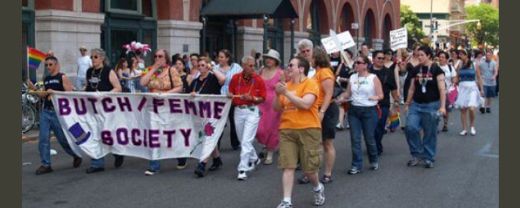
Women can display masculine qualities, often overlooked in discussions of masculinity.
“Tomboy” and “butch” identities institutionalize feminine masculinity in Western culture, which is not always linked to sexual orientation.
Feminist philosophy views female masculinity as a gender performance challenging traditional masculinity and male dominance.
According to Zachary A. Kramer, the conversation about manhood needs to be expanded “to include constructions of masculinity that specifically harm women.”
Despite the feminist movement’s influence leading to more acceptance, masculine women still face societal stigma.
In the corporate world, women who adopt masculine traits may succeed but also face resentment for defying traditional femininity.
Studies in the UK and Germany show that women with masculine traits are more likely to be hired for high-paying jobs and often perform better in their careers.
Related: Understanding Gender Roles and Expectations in Society
Masculinity and Health

Hegemonic masculinity negatively impacts men’s health, leading to fewer doctor visits and higher mortality rates from heart disease and other ailments. Men aged 45 to 60 without a personal doctor have a 25% higher risk of death.
Cardiovascular disease is four times more fatal for men than women between 25 and 65. Many men avoid medical attention due to fear, denial, or a belief it’s not worthwhile.
Studies show men drink alcohol more frequently to conform to masculine norms, increasing health risks.
Media, like a 2000 men’s health magazine, often promotes unhealthy behaviors such as fast food, alcohol consumption, and risky sex under the guise of masculinity.
In South Africa, the spread of HIV highlighted the dangers of harmful masculinity, which is also evident in risky behaviors in China’s commercial sex industry. Gender policing further contributes to issues like alcoholism, anxiety, and depression.
Recommended: What is Emotional Intelligence?
Masculinity in Crisis
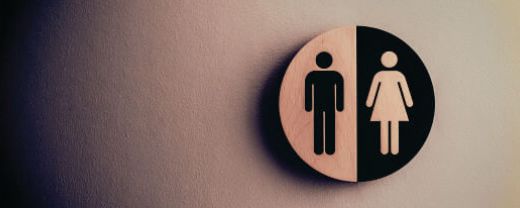
Since the early 1990s, concerns about unemployment, shifting family structures, academic failure, and violent crime have increasingly focused on men and masculinities.
Experts note that young men face conflicting social pressures to practise both modern traits like empathy and traditional masculine qualities like strength.
These contradictions can lead to violence, low self-esteem, and substance abuse. The alpha male rhetoric adds confusion, resulting in anxiety and fragile masculinity.
Nayak and Kehily argue that identity becomes problematic during crises, while Ken Harland’s work in Northern Ireland shows young masculinities struggling with the tension between their public and private personas.
These pressures cause them to feel helpless, neglect their health, and lack committed relationships.
Developing emotional and social intelligence could help young men better navigate these challenges and understand their masculine identities.
Also Read: The Rise Of The Beta Male: Embracing Authentic Masculinity
Masculinities and the Men’s Rights Movement

Men’s rights movements have been more prevalent in the first half of the 20th century as a response to the demands of women’s movements for liberation and equal rights.
Pro-feminist men’s movements and anti-feminist men’s movements split apart from the men’s liberation movement in the 1970s. Most of these second ones are referred to as “men’s rights movements.”
The triumph of the women’s movement, according to certain men’s rights movements, has “feminized” males and society, making them the oppressed and the targets of discrimination.
The majority of men’s rights movements are anti-feminist and support the preservation or restoration of the patriarchal gender system.
Such movements have been able to reach larger audiences because of the development of the Internet.
Men’s rights organizations and father’s rights organizations are typically linked to a drive toward a more traditional view of family and gender relations, and these movements have gained significant clout in Europe.
Research also demonstrates that in some nations, measures encouraging males to play a more active role as fathers have made it easier for women to enter the workforce.
Even as the popularity of the men’s rights movement has grown, there are signs that interest in feminist theories is rising.
Related: The Effect of Masculinity On Society: Embracing Diversity And Inclusion
Masculinity in Different Cultures
Masculinity, as a social construct, manifests uniquely across different cultures around the world.
Understanding how masculinity is perceived and expressed globally emphasizes the diversity and commonalities in masculine norms.
Masculinity in Traditional Chinese Culture
In traditional Chinese culture, for example, masculinity is often linked to Confucian ideals of filial piety, loyalty, and self-discipline.
The Chinese masculine archetype man is depicted as exuding wisdom, responsibility, and authority, mirroring the cultural emphasis on family and societal harmony.
Masculinity in Western Societies
In contrast, in many Western societies such as the United States and parts of Europe, masculinity has historically been associated with stoicism, physical strength, and assertiveness.
These societies often value independence and individual achievement, portraying the ideal man as a rugged and self-reliant figure.
However, contemporary Western perspectives on masculinity are gradually shifting towards acknowledging emotional expressiveness and vulnerability as aspects of male identity.
Masculinity in Sub-Saharan Africa
Moving to Africa, in several Sub-Saharan communities, masculinity is closely tied to roles within the family and community.
For example, among the Maasai in Kenya and Tanzania, traditional masculinity involves bravery, warrior skills, and the ability to provide for and protect the family.
Here, male rites of passage and initiation ceremonies into adulthood play a crucial role in defining masculinity.
Masculinity in South America
In South America, Latin cultures often portray masculinity through the concept of “machismo,” which emphasizes attributes such as honor, loyalty, and a protective attitude towards family members.
This trait, while promoting family unity, can also perpetuate stringent gender roles and expectations.
Nonetheless, there is a growing movement among younger generations to redefine these norms towards more balanced and equitable gender relations.
Masculinity in Oceania
Glimpsing into Oceania, in traditional Aboriginal Australian societies, masculinity is deeply connected to spirituality and the land.
Knowledge of natural environments, hunting skills, and storytelling are vital components of male identity, demonstrating an intrinsic relationship between masculinity and cultural heritage.
Masculinity in East Asian Cultures
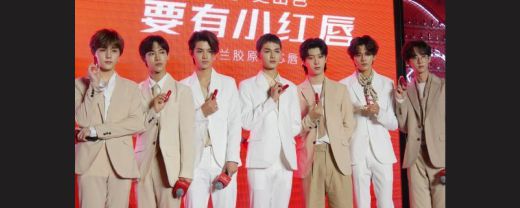
The term herbivore men rose to popularity in Japan in 2008 and were widely publicized.
Young Japanese guys who are naturally detached from masculinity are known as herbivore males.
They are characterized as guys by Masahiro Morioka.
- Being kind-hearted
- Not constrained by manliness
- Not pushy in romantic situations
- Seeing women as equals, and
- Detesting emotional suffering
Guys who value masculinity harshly insult herbivore men.
Big guy, damned hetero male, and straight male cancer are all derogatory terms used to describe males who demonstrate misogyny, dominance, and homophobia in Chinese and Taiwanese popular culture.
Masculinity in East African Cultures
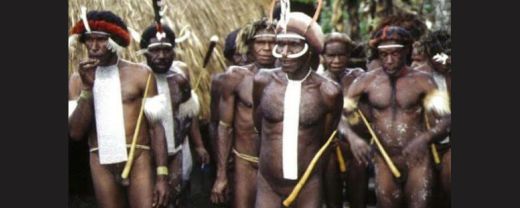
In her study of urban and rural men in East Africa, Margrethe Silberschmidt concluded that men experience disempowerment when they are unable to perform the job of the breadwinner and feel inferior to women when they are unable to support their families.
British colonial rule affected the gender distribution of labor, which contributed to changes in East Africa’s cultural and economic structure.
In an environment where there were mostly unskilled workers, there was an increase in wage labor, which resulted in a demand for more skilled people.
Eventually, the emphasis shifted to raising cash crops, with men being expected to provide the majority of the household’s income.
Because a man’s social status has historically been correlated with his capacity to support others, losing that ability has a detrimental effect on his ego.
Also Read: The Alpha Male Concept, Types and Impact On Society
Challenges of Masculinity
Emotional Expression
One of the major challenges for many men is the societal expectation to suppress emotions.
Traditional views on masculinity promote the idea that men should be tough and unemotional, leading to difficulties in expressing feelings.
This can result in strained relationships and mental health issues as men struggle to find healthy ways to share their vulnerabilities.
Balancing Strength with Vulnerability
There is a persistent tension between the expectation to be strong and the need to show vulnerability.
While strength is traditionally admired, vulnerability is seen as a weakness.
This creates a conflict for men who wish to form deeper connections but feel pressured to maintain a stoic image.
Pressure to Conform to Traditional Roles
Masculine roles, such as being the provider or protector, can impose overwhelming pressure.
Men may feel the need to meet unrealistic standards of success, power, or dominance, leaving little room for individual choice or alternative life paths.
This societal pressure can limit personal growth and satisfaction.
Navigating Modern Gender Expectations
With evolving gender roles, modern men face the challenge of adapting to new expectations while staying true to themselves.
The clash between traditional masculinity and contemporary values can create confusion and anxiety as men try to redefine their identities in a more inclusive world.
Toxic Masculinity
Cultural norms that equate masculinity with aggression, dominance, and control contribute to unhealthy behaviors.
This mindset, sometimes labeled toxic masculinity, can lead to harmful dynamics in relationships, workplaces, and communities.
Men may feel compelled to act in ways that are harmful to themselves and others in an effort to uphold these outdated ideals.
Mental Health Stigma
Many men struggle with seeking help for mental health issues due to the stigma surrounding vulnerability.
The traditional notion that men should be self-reliant and emotionally strong discourages them from asking for support, leading to higher rates of depression, anxiety, and even suicide among men.
Work-Life Balance
The expectation for men to excel in their careers while fulfilling family responsibilities creates an internal struggle.
Juggling professional success and being present at home can lead to stress and burnout. Men may feel the pressure to prioritize work, even at the cost of their personal and family lives.
How to Balance Masculinity
- Embrace Emotional Intelligence: Understanding and managing emotions allows men to balance strength and vulnerability, encouraging deeper relationships and enhancing communication without compromising their masculine identity.
- Redefine Strength: True strength includes resilience, adaptability, and seeking support. By broadening the definition, men can overcome challenges while maintaining emotional openness and flexibility.
- Practice Self-Compassion: Self-compassion involves accepting mistakes and treating oneself kindly during hardships, promoting personal growth and a healthier mindset without the pressure of perfection.
- Develop Open Communication: Honest, open communication allows men to express their emotions and needs, reducing isolation and building stronger, more authentic connections with others.
- Challenge Stereotypes: Challenging outdated masculine stereotypes helps men explore individuality, redefine masculinity, and align their identity with personal values beyond traditional expectations.
- Cultivate Self-Awareness: Self-awareness enables men to recognize societal influences on their behavior, empowering them to live authentically while balancing masculinity with personal integrity.
- Build Healthy Relationships: Nurturing relationships that emphasize respect, reciprocity, and emotional support helps men grow personally while reducing the pressure to conform to rigid masculine ideals.
- Prioritize Mental and Physical Health: Taking care of mental and physical health, through regular exercise, therapy, and mindfulness, equips men with the resilience to face life’s challenges.
- Embrace Vulnerability: Embracing vulnerability encourages deeper emotional connections and self-acceptance, empowering men to break free from the need to appear invincible.
- Encourage Balance in Gender Roles: Promoting equality in relationships and the workplace dismantles traditional gender roles, encouraging men to balance masculinity with fairness and inclusivity.
Conclusion
Masculinity is associated with strength, courage, confidence, and competitiveness, but the concept is fluid and varies across cultures and times.
It is defined in some cultures as dominance and aggression while in others, it is associated with wealth and intellectual prowess.
However, masculinity has been under scrutiny in recent times with the argument that traditional opinions on masculinity are harmful.
Others have called for a more nuanced understanding of masculinity, one that recognizes the diversity and complexity of men’s experiences and challenges traditional gender norms.
REFERENCES
- Revistaideescat: On Masculinities and Bodies
- Institute of Historical Research: The Image of Man. The Creation of Modern Masculinity
- De Gruyter: Masculinity Studies
Pious Clements is the insightful voice behind "The Conducts of Life" blog, where he writes about life ethics, self-development, life mastery, and the dynamics of people and society.
With a profound understanding of human behaviuor and societal dynamics, Pious offers thought-provoking perspectives on ethical living and personal growth.
Through engaging narratives and astute observations, he inspires readers to navigate life's complexities with wisdom and integrity, encouraging a deeper understanding of the human experience and our place within society.
